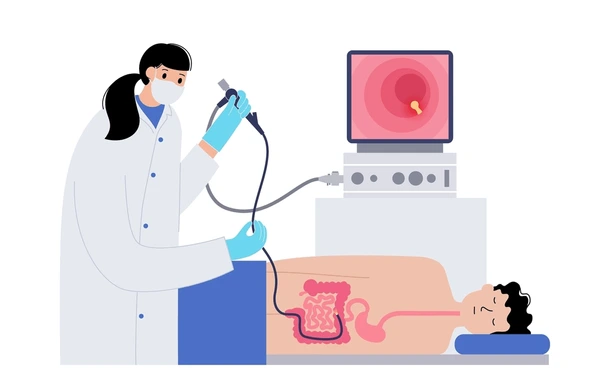A colonoscopy is a medical procedure that examines the large intestine, which includes the colon and rectum. A gastroenterologist performs the examination using a long, flexible tube called a colonoscope. This procedure allows for a direct visual inspection of the intestinal lining, so it is a standard method for screening and diagnosis. Here is more information about what to expect during this procedure:
Preparation and Sedation
Before the procedure, you will need to completely empty your colon. You will follow a special diet for a few days, and your doctor will prescribe a liquid solution to drink the day before the examination. This preparation is a key step because it enables a clear view of the colon lining.
A doctor places an intravenous (IV) line in a vein in your arm or hand. They typically administer medication through the IV to help you relax and stay comfortable, and this sedation makes it unlikely you will remember the procedure afterward. They monitor your vital signs, which include heart rate and blood pressure, throughout the process.
Insertion of Colonoscope
While you lie on your side, the doctor gently inserts the colonoscope into the rectum. They slowly advance the scope through the entire length of the colon. A colonoscope transmits a video image to a monitor, which allows the doctor to see the inside of your colon clearly. The doctor may pump air or carbon dioxide into the colon to inflate it slightly. This inflation provides a better view of the colon wall. You might feel some cramping or pressure as the scope moves through your intestine.
Removal and Biopsy
They withdraw the colonoscope slowly from the colon and carefully monitor the process. During the removal, the doctor performs a second, more detailed examination of the lining of your large intestine. The colonoscopy typically takes just one session, which makes it a convenient option for those seeking efficiency.
If the doctor finds any abnormal tissues, such as polyps, they may remove them during the procedure. This process is called a polypectomy. They may use various instruments, including specialized tools.
They may also take a small piece of tissue for analysis, and this is called a biopsy. The tissue samples are sent to a laboratory for testing. While most polyps are not cancerous, some have the potential to develop into cancer over time.
Treatment Plan
After the procedure, you will rest in a recovery area while the sedation wears off. You might feel bloated or have some gas from the air that was used to inflate the colon. Your doctor may speak with you about the initial findings before you are discharged.
They may schedule a follow-up appointment to discuss the results of any biopsies. Based on the findings, your doctor can recommend a future course of action that is tailored to your specific needs and health condition. This could involve scheduling your next screening or planning additional treatments if needed.
Schedule a Colonoscopy
The results of your colonoscopy provide information about the health of your colon. You will need someone to drive you home after the procedure because the sedative medications impair your reflexes and judgment. You should contact a clinic to discuss scheduling a colonoscopy with a provider.

